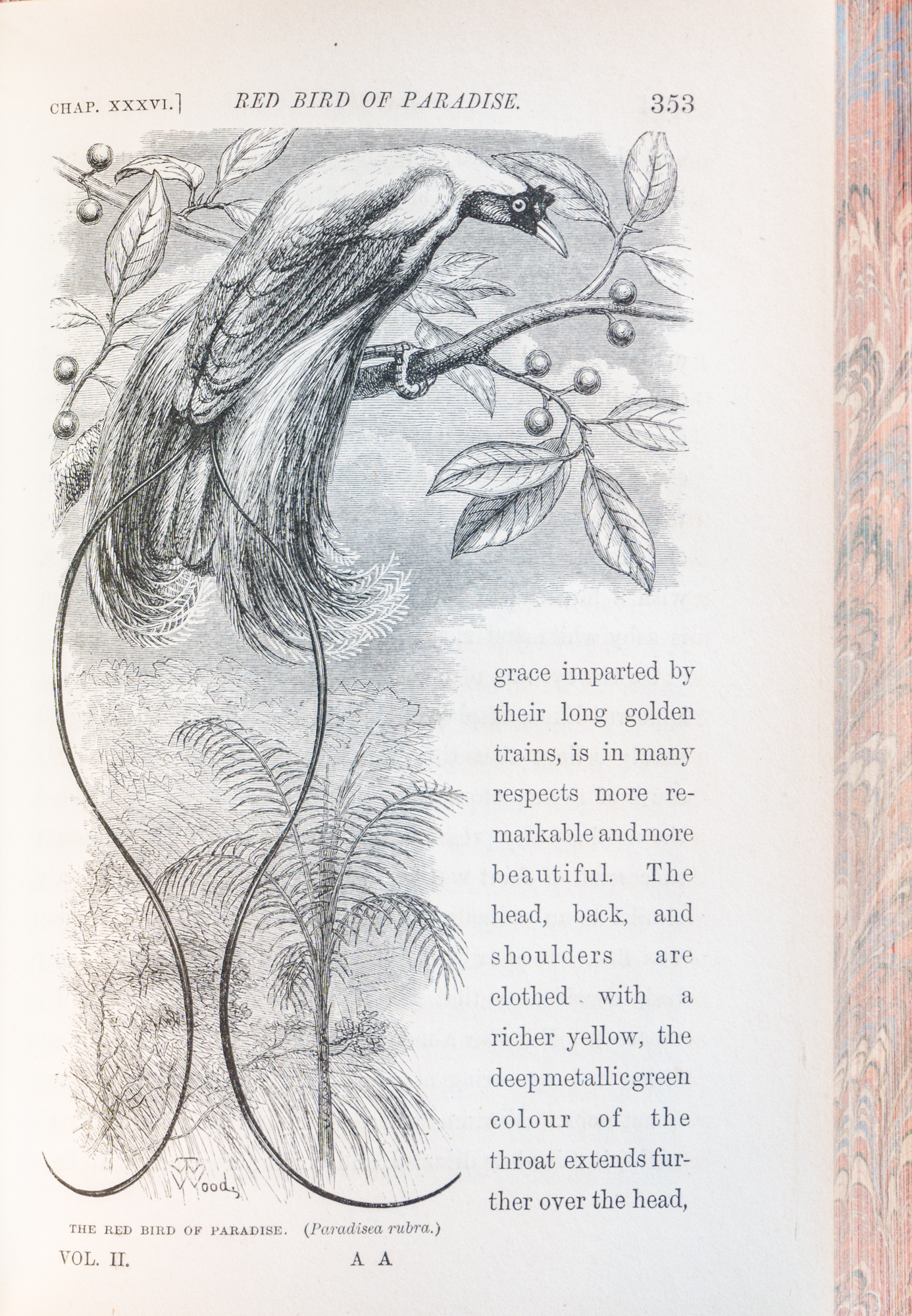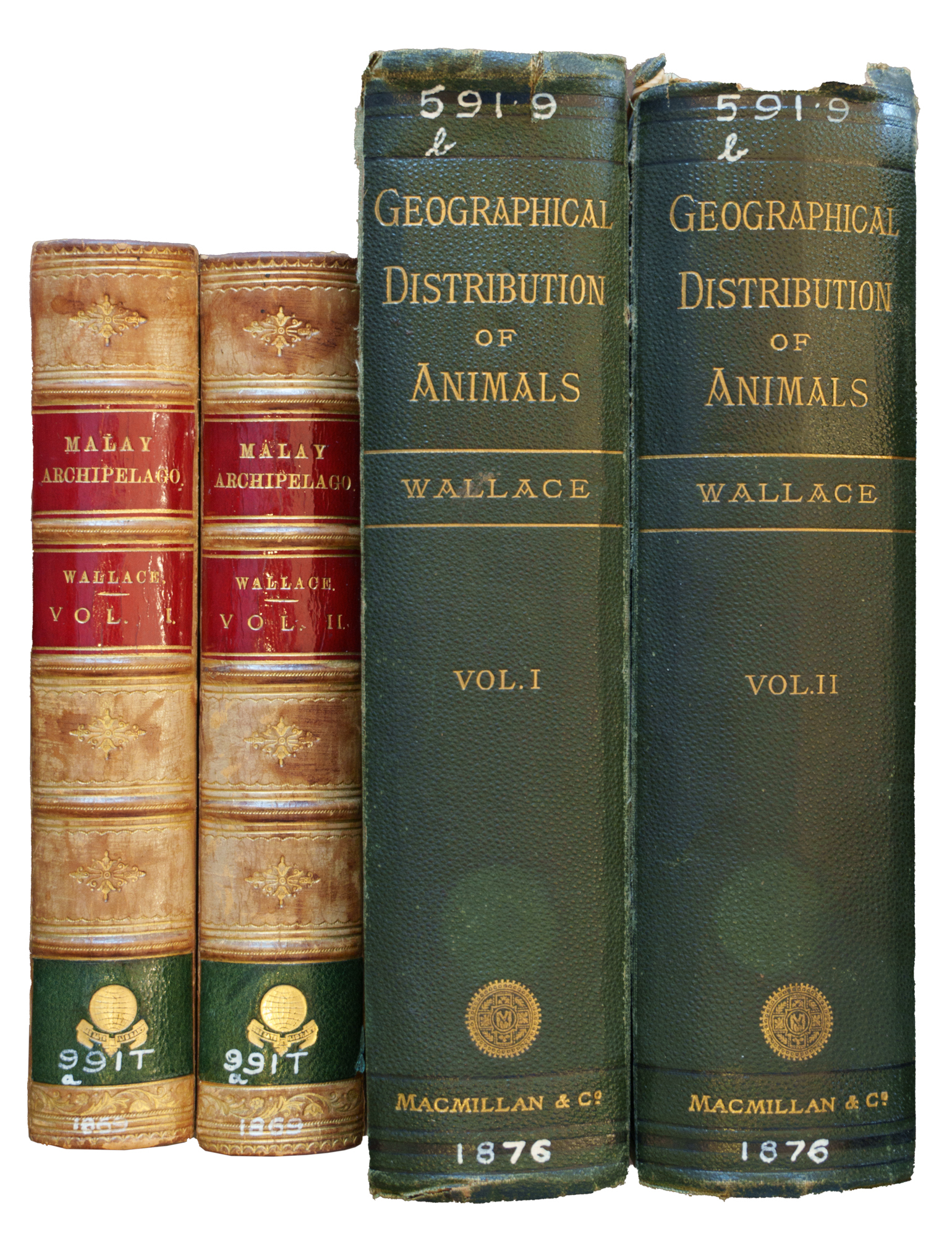Alfred Russell Wallace was born in south Wales on 8th January 1828 although there is some doubt about his exact birthdate. He grew up in Hertford north of London and after leaving school joined his brother in his business as a land surveyor. Involving precise measurement and record keeping - this proved to be useful training for his future career as a field naturalist.
Wallace developed an interest in natural history through his friend Walter Bates who impressed him with his large collection of beetles. In 1848 the two friends decided to strike out together on an adventure to South America collecting specimens of birds, animals and insects earning their living by sending these back to their agent in London for sale. Wallace spent four years in the Amazon basin returning in 1852. It was during this time that Wallace began to notice the differences in species between different geographical areas.
In June 1853 after his return to London from the Amazon Basin Wallace made a good impression with his paper to the Royal Geographical Society on the Rio Negro (so named because the water was a dark colour). As a result he was sponsored by being given a free passage to Singapore (arriving in April 1854) to further his work in South East Asia. Wallace spent a short time there collecting and also went briefly to Malacca. In November he left for Sarawak (now called Kuching) where he stayed with Sir James Brooke the White Rajah of Sarawak, with whom he became close friends. It was here, laid up by the wet season, he started to write his famous paper "The Sarawak Law" which spoke about species being related to one another rather than being created separately.
Wallace then went to Simunjon on the Sadong River where he spent nine months studying the orang-utans, collecting specimens of birds, animals and insects (always recording their locations) and living with the Dyak people whom he came to admire greatly. This time included staying at Rajah Brooke's hut high in the mountain where he made a very large and significant collection of moths. Wallace left Borneo in late January 1856.
Wallace's revolutionary Sarawak Law was published in the Annals and Magazine of Natural History in September 1855. The title of the paper was On the law which has Regulated the Introduction of New Species. Wallace called this his paper on the succession of species or how species develop by natural variability.
After leaving Borneo Wallace went to Ternate which was to become his base for three years. It was here, in February 1858, and quite independently of Darwin, that he wrote his most famous paper "the theory of evolution" which was -"survival of the fittest by natural selection".
For the Linnean Society of London's meeting of 1st July 1858 papers by both Wallace and Darwin were read. As Darwin was not to publish his Origin of Species by Natural Selection until 1859, for this meeting, he provided a five-page summary of his theory. Wallace's paper was titled On the Tendency of Varieties to Depart Indefinitely from the Original Type. It is thought that the members of the Society had little idea of the huge significance of these two papers.
Earlier, in June 1856, Wallace travelled from Bali to Lombok and it was then that he noticed a distinct difference between the animals in these locations. This was one of those “ lucky breaks ” as he was actually on his way from Singapore to Makassar but the ship went via Bali and Lombok. Only twenty-five kilometres separates these two islands and Wallace was impressed with clear differences between the fauna on them.
This was his first inkling that such differences may occur over a much wider area. When he read a paper to the Royal Geographical Society in London in 1863 he drew a line down the Makassar Strait, which separates Borneo to the west from the Celebes to the east. This is still known today as the "Wallace Line".
In addition Wallace came to the conclusion that for the fauna to vary so distinctly between the east and west of the line there must have been a significant geographical separation between the two landmasses in the geological past. Thus Wallace is credited by many to be the first to suggest the idea of “continental drift" which is now universally accepted.
Wallace returned to England in the spring of 1862 but did not publish The Malay Archipelago until 1869. He explained in the Preface the reason for this delay as the vast collection that he had sent home over the years and which he had to re-examine and catalogue before publishing. This included "-nearly three thousand bird skins, twenty thousand insects and butterflies as well as quadrupeds and sea shells. A large proportion of these I had not seen for years:” He dedicated his book to Charles Darwin as "A Token of Personal Esteem and Friendship".


